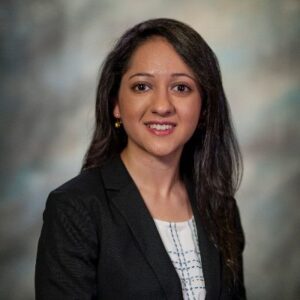Takeaway
When talking with your patient, dedicate at least two minutes to pure listening. During that time, try to not think about the next question you want to ask and just hear your patient’s perspective.

Connecting with Patients | August 20, 2020 | 2 min read
By Zara Latif, MD, Beth Israel Deaconess Medical Center
Another afternoon and another admission—a 72-year-old woman with metabolic acidosis. That was all the information I received before admitting her. As I walked to the emergency department, I mentally prepared questions to ask. I took her history and proceeded to the physical exam. While doing the physical exam, I realized she had two ostomy bags due to chronic fistulas. Taken by surprise, I asked about the ostomy bags and she only responded with, “I’ll be okay.”
Days went by and she continued to end our conversations with, “I’ll be okay.”
After 17 days of hospitalization and multiple failed attempts to find a solution for her, I concluded that we couldn’t help her. There was nothing that could be done. Her fluid output was extremely large due to her fistulas and she couldn’t undergo surgery.
It became a favorite part of my morning to check on her before morning report. She shared stories about the multiple rings on her fingers, her tomato soup recipe, and her favorite hair stylist. She didn’t want to talk about her medical condition and I respected that.
After listening to her many stories, it finally occurred to me that she wasn’t just a patient with electrolyte abnormalities, complicated chronic fistulas, and metabolic acidosis. She was a mother who had worked three jobs while raising her children, painted her nails every week even in sickness, and a fragile human being who saw my fear and continued to reassure me each morning by saying, “I’ll be okay.”
I then understood that she didn’t ask any questions about her condition because she knew it better than all of us because she was living it. She didn’t need me to discuss her diagnosis in detail, but she appreciated me wiping the ostomy bag when it overflowed, adding sugar to her coffee, and listening to her recount the morning news. While we both knew that there was nothing that could be done medically, what I realized was that healing doesn’t happen just with medications and procedures. Healing isn’t always centered around finding a cure. Healing can also be closely listening to stories about cherished times patients’ lives.
She taught me a valuable lesson that I’ll carry with me throughout my career, the importance of being fully present while in a patient’s room. Whether pre-rounding or admitting someone on a hectic day, I learned the value of being present. Being present long enough to listen past the chief complaint, to understand my patient’s deepest fears, to offer the support they need and not what I believe they “should” need. She also taught me to acknowledge the patient as the expert on themselves.
Here are 2 things that help me stay present with my patient:
1. The 2-minute rule
When in a patient’s room, dedicate at least two minutes of pure listening. In those two minutes, try to not think about the next question you want to ask but, just listen to your patient’s thoughts.
2. Sit down at eye level
While sometimes difficult to do in a hospital or clinic room, sitting down at the same level as your patient for a few minutes while pre-rounding is perhaps the single most important thing that helps me be fully present.

